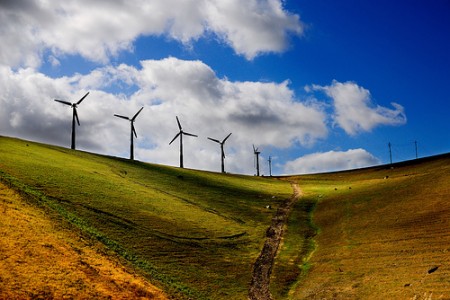Let’s face it: reading about climate change usually feels like being trapped in a monologue delivered by a doomsday prophet. Fire, floods, famine… fun times ahead! But what if, instead of grim inevitability, we were handed an actual plan? Enter Drawdown: The Most Comprehensive Plan Ever Proposed to Reverse Global Warming. The book that doesn’t just shake its head at humanity’s poor life choices, but also offers a roadmap for redemption. A rare mix of scientific rigour, economic pragmatism, and unwavering optimism, Paul Hawken’s book dares to ask: what if we actually did something?
Contents
Paul Hawken, environmentalist, entrepreneur, and man-on-a-mission, assembles a 100-strong arsenal of climate solutions that range from the “of course, that makes sense” variety (wind turbines, solar farms) to the “wait, what?” variety (educating girls, refrigerant management, cows wearing methane-reducing backpacks; okay, maybe not that last one, but close). This makes Drawdown a cross between an academic resource and an accessible guide for the layman – a rarity in climate literature.
The book’s authority is further underpinned by its origin. Drawdown isn’t just Hawken’s brainchild. Rather, this is the collaborative effort of Project Drawdown, an elite squad of climate scientists, analysts, and, curiously enough, Tom Brady and Gisele Bündchen, because why not? These people are committed to researching and propagating solutions to global warming. Paul Hawken co-founded Project Drawdown and took on the role of the book’s editor. With contributors like Bill McKibben and Peter Wohlleben, this is basically the Ocean’s Eleven of environmental research, except instead of robbing a casino, they’re plotting to save the planet.
The world is not beyond saving,
Paul Hawken, probably, if he were the type to slap slogans onto motivational posters.
but it is beyond waiting.
What makes Drawdown stand out is its fixation on solutions. This isn’t another climate doom compilation; this is the IKEA instruction manual for reversing global warming. Every proposed solution comes with an analysis of its history, impact, cost, and potential savings. So if you’ve ever wondered what swapping out air-conditioning chemicals for less catastrophic alternatives would do for the planet (spoiler: a lot), this book has you covered.
Indeed, a great deal of the book’s allure comes from Hawken’s specific, meticulously researched climate-saving arsenal:



- In Food: Plant-Rich Diets (Chapter 4), Hawken explains how simply changing our diets towards more plant-based consumption can drastically reduce greenhouse gas emissions. Turns out eating fewer cheeseburgers is great for both your cholesterol and the planet. Who knew?
- Educating Girls (Chapter 7) details how expanding educational opportunities for girls in developing countries promotes social justice and helps regulate population growth, in turn reducing strain on our planet’s resources. Because when women are provided access to education, they not only transform their futures, they also inadvertently combat climate change. Take that, patriarchy.
- Energy: Onshore Wind Turbines (Chapter 11) harnesses the immense potential power of the onshore wind, focusing on its cost-effectiveness and low environmental impact. Those giant white pinwheels you see on road trips? They’re the unsung heroes of carbon reduction.
- The book also delves into less conventional solutions. Materials: Industrial Hemp (Chapter 21), illustrates how this hardy plant can serve as a sustainable alternative for many industrial applications, aiding in the reduction of carbon emissions.
While each of these solutions could stand alone, Drawdown presents the climate solutions as an interconnected web of choices and actions. Like a particularly nerdy version of The Avengers, except instead of fighting Thanos, they’re fighting global warming and rising sea levels.
Review
Hawken’s writing walks a fine line between inspiring and authoritative, managing to explain complex science without making the reader feel like they need a PhD in atmospheric chemistry. His enthusiasm is palpable, making the book feel less like a textbook and more like an impassioned TED Talk delivered by someone who genuinely believes humanity still has a shot.

The book’s global perspective is refreshing. It doesn’t just assume a one-size-fits-all approach, but rather considers how climate solutions can be applied in different economic and social contexts. It’s also delightfully free of political posturing. That alone is an impressive feat, considering how discussing climate change in some circles is tantamount to launching an ideological grenade.
That said, the book has its flaws. The sheer number of solutions, while impressive, can feel overwhelming. Like being handed a buffet menu that insists everything is the house speciality. Some critiques also point out that Drawdown sidesteps the political and systemic hurdles that often block these solutions from actual implementation. You can build all the wind farms you want, but good luck convincing certain governments that climate change isn’t just “a bit of weather.”
Still, these are minor quibbles in what is otherwise an essential read. Drawdown refuses to wallow in despair. Instead, it flips the narrative on its head: what if we stopped treating climate change like an inevitable doom spiral, and started seeing it as an opportunity for innovation? The book goes beyond simply identifying solutions, providing a roadmap to a future that is not just about surviving, but thriving.
Drawdown presents a vision of the future that is neither utopian nor apocalyptic. It sees a unique chance for creativity, development, and cooperation, and invites us to actively participate in restoring and renewing our Earth. It is, above all, achievable. It argues that the tools to fix our mess are already in our hands. We just need to use them.
Verdict
At its core, Drawdown is a love letter to human ingenuity. It is a must-read for those seeking an insightful, feasible, and optimistic view of climate change. The book stands as a tribute to our ability to innovate and persist. It reassures readers that although the goal of reversing global warming is challenging, it is within reach when we work together.
It recognises that while we may have driven ourselves to the brink, we also have the power (and technology) to pull ourselves back. It’s not about guilt, it’s about action. With this book, Hawken certainly puts us on the right path.
Yes, climate change is terrifying. Yes, time is running out. But no, we are not powerless. And that’s why this book matters.
